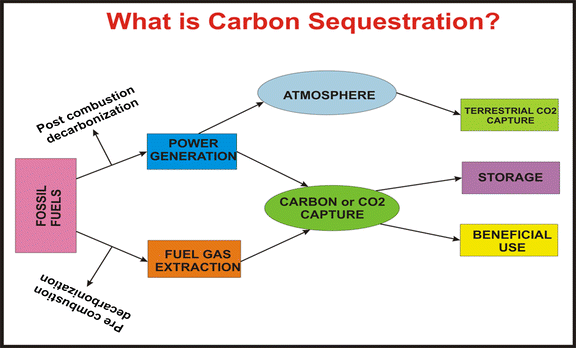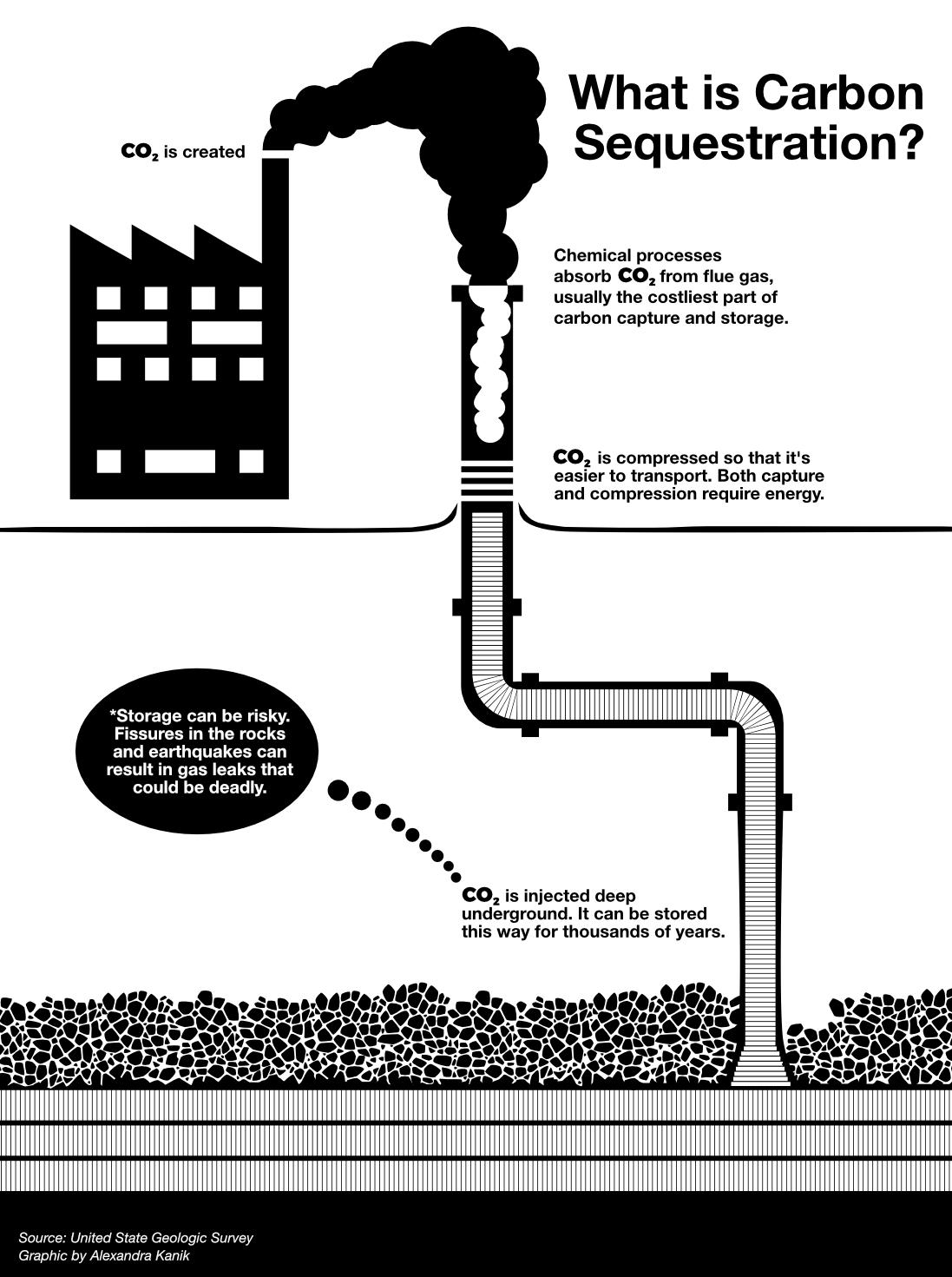

These simple sounding steps hide a multitude of challenges that will need to be overcome to make these processes work. The carbon dioxide would then be dried and compressed before being piped or shipped and pumped into the reservoir. An alternative is to separate the carbon dioxide using a membrane that is selective for transmitting the gas but resists transmitting other gases. This typically would use a chemical system to capture the carbon dioxide in one step and release it in a second step thus producing a concentrated stream of pure carbon dioxide that can be dried and compressed for piping or shipping to a well and pumped as a super critical fluid into a deep sub-surface formation (rock) where it would be permanently stored. There is also growing interest in capturing carbon dioxide at the end of industrial processes such as power generation, cement or steel manufacture etc. In turn this may create a feedback loop with yet more warming etc. There are concerns that rising global temperatures may disturb this equilibria and release more carbon dioxide than is being sequestered.

Where the soil is less disturbed by agriculture carbonaceous rich material does build up in the soil. They are rather part of a dynamic equilibrium between the above examples of carbon incorporations and soil processes that release carbon dioxide and methane (and nitrogen oxides) back into the atmosphere. These processes do not lead to a total permanent removal of carbon dioxide.

The net effect of such processes is to incorporate carbon into soils and as such remove carbon dioxide from the atmosphere through the previous plant growth that led to the plant, crop litter or animal feed. In forests and uncultivated lands leaves, plant litter and fire debris are all degraded and incorporated into the surface layers through natural processes actions of fauna and fungi for example. Composts and manures applied as top dressing or through injection are other routes used in farming to provide nutrients and carbon rich materials into the surface layers. In agriculture remains from the harvest may be incorporated into the as part of the cultivation process: ploughing and discing for example. There are many processes that contribute to sequestration. Soil carbon sequestration is the process of locking carbon into soils. Sometimes this process happens as part of the agricultural cycle and plant remains are incorporated during ploughing and tilling. Carbon becomes locked up in the soil through many biological processes including the incorporation of leaf and other plant litter by creatures living in the soil. Soil carbon sequestration is the process of removing carbon dioxide from the air via plants and trees.


 0 kommentar(er)
0 kommentar(er)
